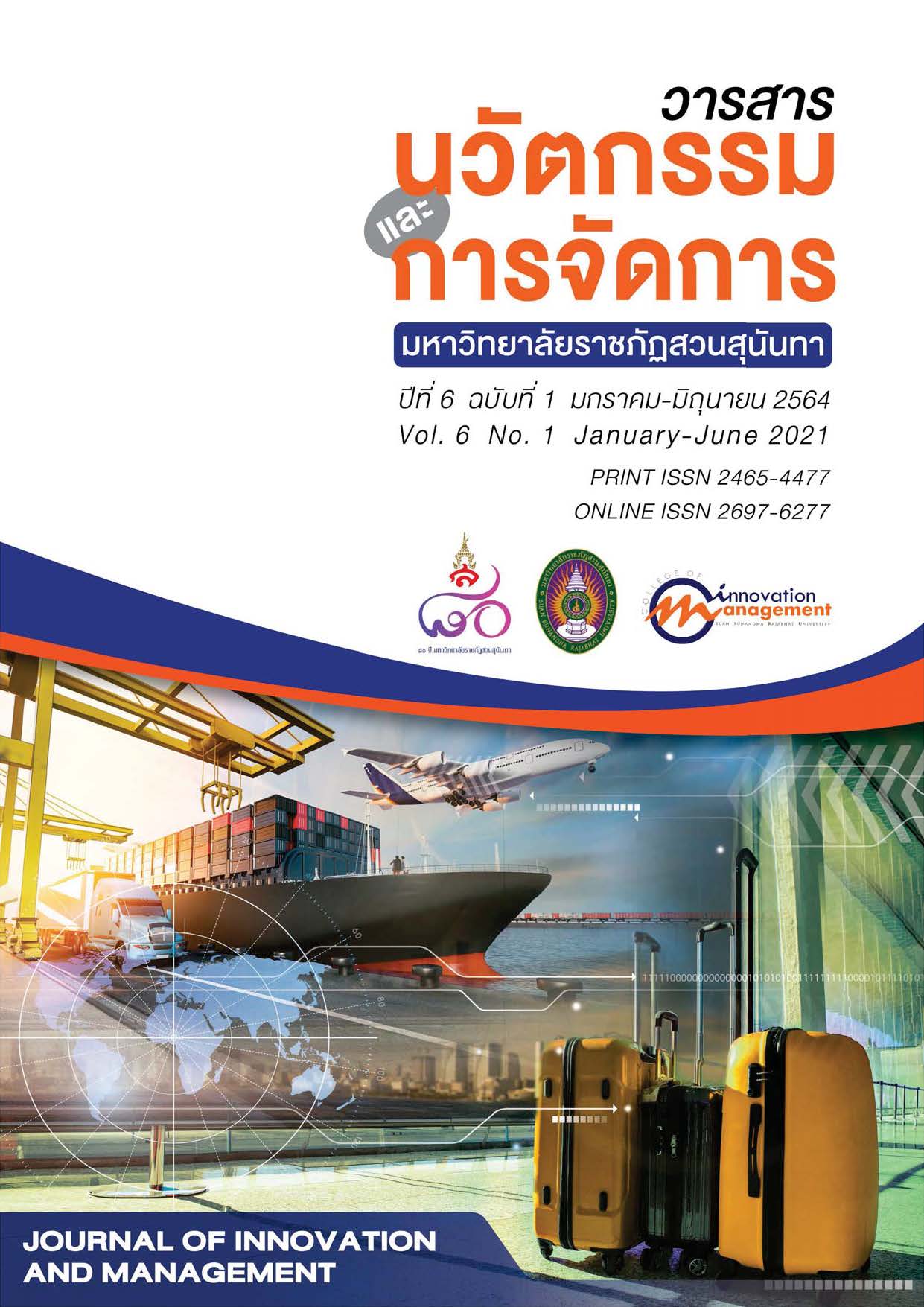The Study on Supply Chain Management Forms and Characteristics of Cut Flower Sacred Lotus in Nakhon Pathom Province
Keywords:
Supply Chain, Logistucs, Lotus Cut Flower, Nakhon PathomAbstract
The objective of this research was to study the supply chain management forms and characteristics of Cut Flower Sacred Lotus in Nakhon Pathom Province. There were 3 operational procedures: (1) studying relevant primary and secondary data, (2) analyzing supply chain management forms and characteristics of Cut Flower Sacred Lotus, and (3) inspecting and confirming research results. The study found that the supply chain of Cut Flower Sacred Lotus in Nakhon Pathom Province consisted of 3 forms. For supply chain management characteristics, planting Magnolia Lotus was most popular, representing 100 percent. Planting according to the market needs represented 77.27 percent. Planning the planting period in accordance with the period of harvest in the festival seasons accounted for 100%. Sourcing species from nearby lotus fields represented 63.64 percent. Most of the farmers used chemical fertilizer, accounting for 81.82 percent, and they mainly bought chemical fertilizer from retailers for the cultivation, representing 72.73 percent. Furthermore, most of the growers used less-than-3-month planting time to produce the first lot of products, accounting for 100 percent, and they mostly farmed once to produce less-than-1,000-kilogram products per rai, representing 100 percent. Most of the cultivators, besides, harvested lotus flowers for distribution every other day, accounting for 81.82 percent. Moreover, most of the merchants bought the products directly at Lotus fields, accounting for 86.36 percent. Additionally, most of the products were transported by buyers’ vehicles, accounting for 81.82 percent. In addition, most of the products were distributed to Pak Khlong Talat, representing 77.27 percent. And characteristics of Cut Flower Sacred Lotus in Nakhon Pathom Province according to the composition of 5 SCOR Model. It is divided into 3 areas: operational, value-added and income, which includes procurement processes. cultivation process and delivery process
References
Chuto, N. (1998). Qualitative research. Bangkok: Printpro company limited.
Hiranphaet, A. (2019). The supply chain management of the cultivated banana in Nakhon Pathom. Retrieved 1 August 2020 from https://ieeexplore.ieee.org/document/8612352/references#
Krejcie, R.V. and Morgan, D.W. (1970) Determining Sample Size for Research Activities. Educational and Psychological Measurement, 30, 607-610.
National Statistical office. (2014). Surveying social and cultural conditions. [Online]. Retrieved 15 May 2019 form http://statbbi.nso.go.th/staticreport/page/sector/th/04.aspx
Nakhon Pathom Province. (2020). Nakhon Pathom Province Development Plan (2018-2022). [Online]. Retrieved 1 August 2020 from: http://www.nakhonpathom.go.th/news_ develop_plan
Pimonratnakan, S. (2017). The supply chain management of agricultural commodities orchids In Budhamonthon, NakhonPathom province. Veridian E-Journal, 10(2), 1595-1610. (in Thai)
Promsen, W. (2011). Qualitative research and quantitative research. RMUTI Journal science and technology, 4(1), 95-102.
Sooksai, T. (2019). The knowledge linkage in supply chain of cut-flower sacred lotus farming in Nakhon Pathom. Journal of Logistics and Supply Chain College, 5(2), 55-66. (in Thai)
Wanitbancha, K. (2003). Statistical Analysis Statistics for the Management, Administration and Research. 6th ed. Bangkok: Chulalongkorn University. (in Thai)
Downloads
Published
How to Cite
Issue
Section
License
Copyright (c) 2021 Journal of Innovation and Management

This work is licensed under a Creative Commons Attribution-NonCommercial-NoDerivatives 4.0 International License.
See Publication Ethics https://so03.tci-thaijo.org/index.php/journalcim/Ethics






